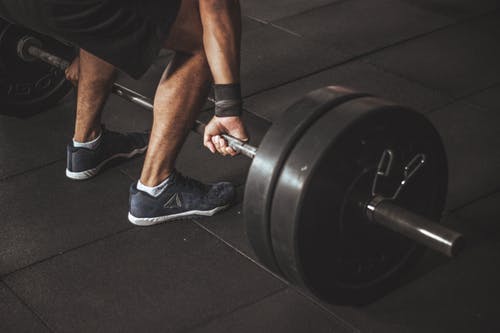In what is probably the opening salvo of this, Otto et al published an article in the May issue of the Journal of Strength and Conditioning Research looking at the effectiveness of kettlebell training versus traditional Olympic lifting on performance measures. To compare these two modes, the authors studied thirty college-aged men and had them train twice per week, for six weeks, in either a kettlebell program or a weightlifting program.
The training programs were as follows:
- Kettlebell: swings, accelerated swings, goblet squats; volume increased from 58 lifts with the 16kg kettlebell to 72 lifts with the 16kg kettlebell during the study.
- Weightlifting: power cleans, high pulls, back squats; volume increased from 58 lifts at 80% of 1-RM to 72 lifts with 80% of 1-RM during the study.
All subjects were pre- and post-tested on the vertical jump, back squat, and power clean.
At the end of six weeks, the results were:
- Both groups had essentially no increase in body mass.
- The weightlifting group improved their vertical jump by almost 4%, the kettlebell group by less than 1%.
- The weightlifting group improved their back squat by almost 14%, the kettlebell group by almost 4.5%.
- The weightlifting group improved their power clean by almost 10%, the kettlebell group by 4%.
The authors conclude that the kettlebell is effective at increasing vertical jump, squat, and power clean strength although traditional weightlifting is more effective.
It’s an interesting study from the standpoint that, to my knowledge, it is breaking ground on studying kettlebells. But it is not without flaws. First, the arbitrarily selected kettlebell weight of 16 kg for each subject may not have been enough to provide the overload that the subjects needed to make gains from training. Second, the kettlebell exercises that were selected (swings) are rhythmic exercises, they are not explosive ones. Having the subjects perform cleans with the kettlebell might have led to different results. Third, the study demonstrates the importance of training specificity. The group that trained on the tests (power clean and back squats) made the best gains on those tests. It’s almost as bad as putting together a study using heavy strength training for the leg press and then seeing who can swim the fastest.
Kettlebells are an interesting training tool. I don’t think they are the magic bullet for anything, but they are fun. Like dumbbells and like barbells, they have mass and this mass can be increased. This means that they can be used for hypertrophy training, increasing strength, and increasing power. The Olympic lifts can be done with kettlebells, using essentially the same techniques, volumes, and intensities, which means that kettlebells (with appropriate training) can increase power. It would be extremely interesting to have subjects train at similar intensities (kettlebells vs. barbells), with similar exercises, and see how their performance compares (vertical jump, long jump, sprints, etc.).
Otto III, W.H., Coburn, J.W., Brown, L.E., and Spiering, B.A. (2012). Effects of weightlifting vs. kettlebell training on vertical jump, strength, and body composition. Journal of Strength and Conditioning Research, 26(5): 1199-1202.


